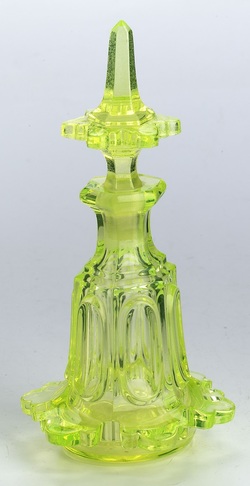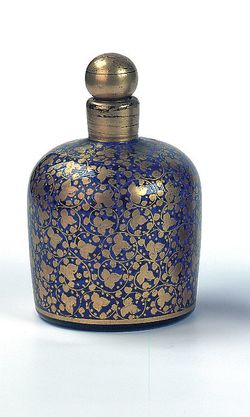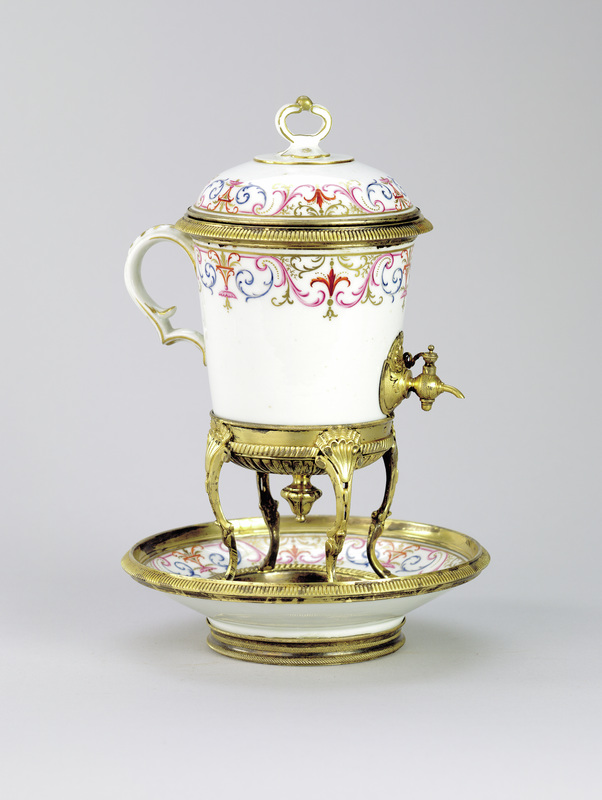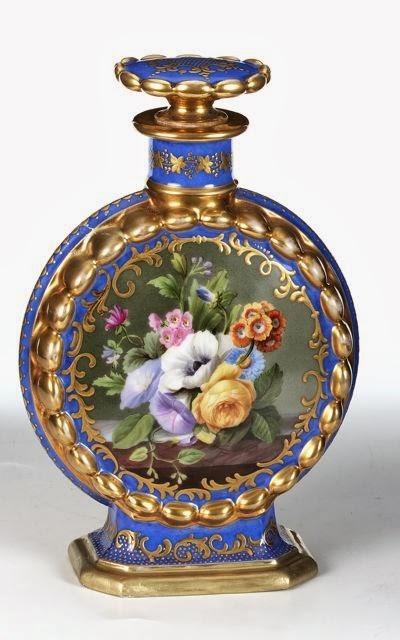Louis XV orders that his apartments are each day impregnated with a new perfume. Any object of ornament should be sprinkled by it.
Of course, perfume is not only used to seduce the opposite sex, but also to mask the bad smells.
Indeed, the lack of hygiene and the lack of sewers release strongly nauseous odours as well inside as outside the dwellings. Versailles, is not saved by it, far from there.
In Vincennes and Sevres, one makes set up bronze perfume fountains, decorated with statues and bouquets of flower to scent the city.
The medical college highly recommends perfume for disinfecting and cleaning.
This invaluable and refined culture has completely forgot the bases of personal hygiene. One still regards bathing as unhealthy. The toilet of a king consists in rubbing the hands and the face with a little sweet almond oil before sprinkling perfume copiously.
During the “Lace War”, to mask bad smells, men of sword called “Servants of the Scents” for the “Flowered Guard” regiment, wash themselves with perfumes.
At the 18th Century, Cleanliness is
To Powder with Preparations made with
Rose or Jonquil,
To Carry Scent Bags in its Doublet,
To Rub with Angel's Water with Bergamot…

Louis XV, although married with the Duchess of Chateauroux, gives up his sceptre in the hands of Marquise de Pompadour.
Very intelligent, she shows an activity and of a remarkable energy, so much so that any business of State is discussed and stopped under its direction; ministers, ambassadors, marshals, come to hold council in its boudoir.
She is the dispenser of all royal favours and everything could be obtained under her influence.
Moreover, she protects all arts and has an invaluable taste. She is surrounded by the best artists of her time, by the greatest minds of her time: Boucher, La Tour, Voltaire…
Each new thought born in France finds an asylum certain near her.
Whereas the Queen, of Polish origin hardly appreciates perfumes, Marquise de Pompadour, consumes some with such a prodigality that she spends in only one year the sum of almost a million francs.
She founds the porcelain factory of Sevres and gives to France a lucrative industry.
In 1736, Pompadour launches the fashion of famous “Eau de Cologne” of Jean Marie Farina.
In 1740, she launches the aromatized vinegar.
The 18th century is one very important period in the history of perfume.
The competition between the glovers perfumers is getting so important that one orders to them to sell only their own production and exclusively in their shops.
It is at that time that one sees appearing the first great names of perfumers.
Liste de la Corporation des Marchands Gantiers-Parfumeur Publiée en 1776
Adam, M., founder of "La Reine des Fleurs", 82 Division des Lombards (next to Passage Molière)
Beauiard, rue St Honoré
Chardin Hadancourt at Pont Saint Michel
Gervais, rue Saint Martin
Lugier, rue Bourg L'abbé
Raibaud, rue St Honoré
Fargeon, rue de Roule
J.H. Fargeon very early becomes the Official Glover-Perfumer of Roy Louis XV and his Court. He has the favours of the Roy and his business is flourishing. All Louis XV's Court; from duchesses to knights, everyone buys his pomades, powders, make-ups and perfumes.
Fargeon goes bankrupt in 1778, when the Roy and its scented Court owes him a very important sum. With the death of Louis XV, he will never be paid.
They put an end to the small Art of Perfumery craft and change the small town in a true industrial and commercial empire.
Marquise de Pompadour does not reign only on fashion, she is its incarnation and she carries to the firmament the sensual and refined culture of Versailles.
She Knows How to Amuse the King and one says that to Play She is Hiding on Her Scents Bottles
Louis XV has to Look for Them
The Pompadour and the du Barry launch the modes at the Court. Perfumes are spread in all the women places of the city and are quickly adopted by any gallant knight who, as for the powder, adopts the colors and the fragrances of his beloved one.
It is not for nothing that the Court of Roy Louis XV is baptised the “Scented Court”: men and women compete of taste for scents.

In second half of the XVIII ème century, the vogue of perfumes still develops. The Spanish Leather, scented fans and gloves, perfume bottles and scents coffers remain the prerogative of the Court.
In 1746, smelling bags originating in England replace burning pastilles and suffocating smoke
The malicious gossip allots sometimes to the perfume sprayed on the body, fainding, languors and vapors caused by the too tight dresses.
Salts and vinegars, which are presented in tiny bottles or small boxes, also called vinaigrettes, allow to vanished women to get back their mind.
By 1750, certain perfume houses decorate their bottles with beautiful gilded labels. (Butterfly 1760/Prud' hon 1795).
It is the time when the first large French crystal manufactures appear: St Louis which was a glassmaking since 1586 becomes crystal manufacture in 1781. The Baccarat glassmaking is born in 1764 and will become crystal manufacture only in 1817.


 RSS Feed
RSS Feed